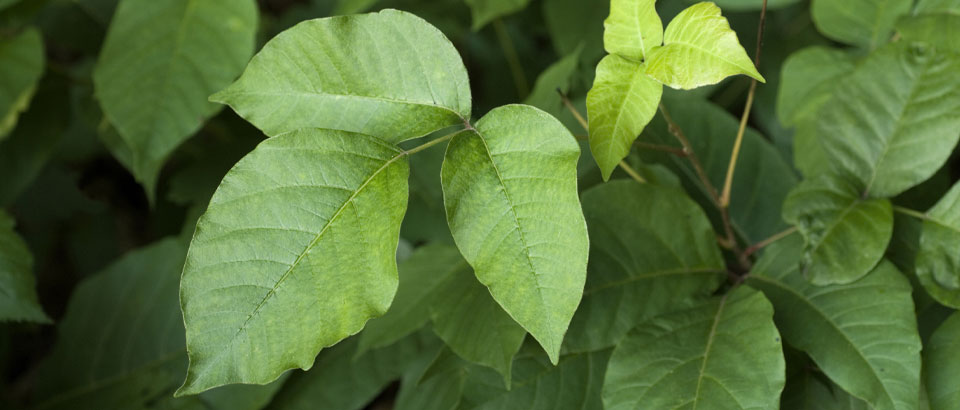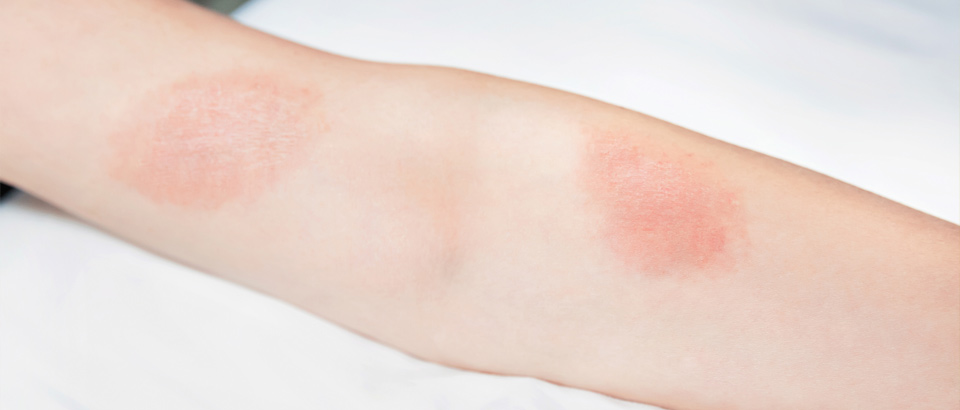What Is Poison Ivy?
Poison ivy, along with poison sumac, is usually found in Eastern and the Midwestern states, while poison oak usually only shows up in the West.
While all three plants have some differences, they all have urushiol oil in them. That’s what causes that itchy rash you can expect to develop if you encounter them. This oil gets released when leaves or other parts of the plant are injured. It then causes an itchy rash with blisters or bumps. It doesn’t take much for the rash to develop, according to Centers for Disease Control and Prevention (CDC), 80 to 90 percent of adults will get a rash if exposed to 50 micrograms of urushiol, which is less than one grain of salt.1
What Does Poison Ivy Look Like?
There are two types: Eastern poison ivy has vines that look like ropes with three shiny leaves. In the spring and summer, those leaves are green but may become red in the fall. This version likes to climb and can commonly be found growing up tree trunks. Western poison ivy appears more shrub-like and can either have yellow or green flowers that may have green, yellow or amber berries on them. To help avoid encountering these plants, remember the popular phrase, “Leaves of three, let them be.” Always be on the lookout for plants with three leaves, as they could be poison ivy.

What Does Poison Ivy Rash Look Like?
Most of the time, a rash will show up on the skin as itchy, red and blistery bumps. These blisters may break open and leak fluid. In rare cases, some people may get black spots or streaks instead of a red rash. Often, the itchy rash, which can turn into painful blisters, doesn't start to develop until one to two days after encountering the plant. Typically, the rash lasts one to two weeks and is not contagious. Make sure to properly wash any clothing and objects that have touched this oil to prevent another potential rash.

Symptoms of Poison Ivy
- Itchy skin
- Redness or red streaks
- Hives
- Swelling
- An outbreak of small or large blisters, often forming streaks or lines
- Crusting skin (after blisters burst) – usually from scratching
Is Poison Ivy Contagious
Good news. The rash itself isn’t contagious. However, if your skin touches someone else’s skin or clothing that has urushiol oil on it, you can still develop a rash. And if you have furry friends that play outside, they can’t get a rash from these plants. They can, however, retain oil in their fur that could give you and your family a rash. To protect everyone, bathe your pets any time they go near poison ivy, oak or sumac. Just don’t forget to wear rubber gloves to protect your hands!
If you experience any of the following symptoms, visit MedExpress for medical attention immediately:
- Rash or itchiness covers most of your body
- Many rashes or blisters
- Swelling, especially if eyelid swells shut
- Rash develops anywhere on your face or genitals
- Itching doesn't seem to go away
If you have trouble breathing or swallowing, you’re having a severe reaction and should go to the emergency room immediately.
Diagnosing Poison Ivy
By examining the rash, among other things, our medical team can diagnose your condition and provide treatment. Typically, no laboratory testing is needed to make the diagnosis.
Treating Poison Ivy
Good news. Most of the rashes from these plants will go away on their own in around one to three weeks. However, if you have a more serious reaction, you may need prescription medication, such as a topical or systemic steroid.
The rash may also cause an infection, which is indicated by pus, pain, a fever, swelling and warmth around the rash. If this happens, you may be prescribed an antibiotic. Make sure that you leave any blisters alone and don’t scratch the rash, as that can also lead to an infection.
To help stop the itch while healing, consider these tips:2
- Wash everything, including clothing, that may have the plant's oil.
- Upon any contact with poison ivy, oak or sumac, immediately rinse your skin with lukewarm, soapy water.
- A short, lukewarm shower or a bath in a colloidal oatmeal preparation can provide relief. You can also use one cup of baking soda to the running water.
- Use calamine lotion or hydrocortisone cream.
- Apply cool compresses anywhere your skin is itchy.
If you happen to get a rash and can’t get any relief from the itching, visit your neighborhood MedExpress. We’re here from 8 to 8 every day, so you can schedule an appointment online or just walk right in to discover what’s going on with your skin and get started on a treatment plan to get you back to feeling better.
References:
1 Centers for Disease Control and Prevention: Poisonous Plants: Types of Exposure. Last Updated June 1, 2018. Accessed August 8, 2023.
2 American Academy of Dermatology Association. Poison Ivy, Oak and Sumac: How to Treat the Rash. Accessed August 8, 2023.
